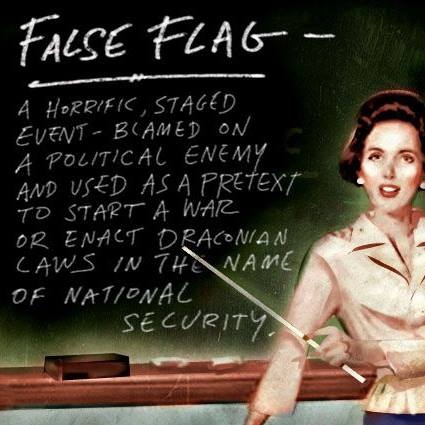BY ALAN SABROSKY,
Those who do not learn from history are doomed to repeat it. (George Santayana)
Santayana’s maxim is probably one of the most widely quoted criticisms by scholars and practitioners alike of public policy – especially foreign policy – when it goes awry. This is especially true when the result is disaster at home or defeat abroad, the latter all too often producing the former. Sometimes leaders and their countries survive, other times one or both are ruined.
Few out there even today are utterly devoid of a sense of history or driven lemming-like to court disaster, although I concede ever more these days come depressingly close. All forms of government have their weak points, and autocracies in the past have a decidedly mixed record of accomplishments. But it seems clear at least in the case of the United States, that the wider the franchise, the less competent the leaders, no matter what their ideology or partisan identification. There isn’t much in counting noses to choose the winner of an election to recommend it to any country. Republics try to strike a balance with limited governmental powers and a limited franchise, and for those attributes are hated by demagogues and grifters alike – and all too often fall to one or both.
An amendment to Santayana’s maxim was made in a seminal work a half century ago by Ernest R. May. In his compelling “Lessons” of the Past: The Use and Misuse of History in American Foreign Policy (1973), May argued that it was not that policymakers and their advisers (we might say “handlers” today) failed to remember history or to learn from it. The real problem was that all too often, they had either learned the wrong lessons or misinterpreted the right ones, and walked into catastrophe deliberately, expecting all to go well – and were both astonished and appalled at what transpired. And even those consequences are readily magnified when whatever lessons are learned are based on hoax deliberately masquerading as history.
Unsettled History
The thought of what constitutes significant “unsettled history” came to me about a year ago when Mark Zuckerberg – no paragon of free speech, to put it mildly – announced on Facebook that he would no longer permit “misinformation” about “settled historical events” to be bandied about on that social media platform. Well, like it or not, it is his platform, no one is forced to use it, and he can set whatever rules he chooses. And I say that as one who over the past three years or so has spent more time in “Facebook jail” than online, and has been shadow-banned a good deal when I am not in cyber jail.
But the very idea that there was any significant “settled history” struck me as odd. Certainly, some outcomes are that: Carthage lost in the end to Rome and was erased so completely that everything we know about it, is known from the writings of the Romans who did the erasing. Abraham Lincoln did die in 1865. Atomic bombs were dropped on Japan in 1945. And so forth.
But if the “what” is sometimes known with clarity, the “why” is invariably debated to the present, as in “What did it mean?” Was it inevitable that Carthage lose to Rome? Did Lincoln’s death change Reconstruction? Was it necessary for the U.S. to use atomic bombs to force Japan to surrender? Official histories are at least initially written by the winners, so those initial answers are invariably affirmative.
But these and so many other consequential historical events usually are debated widely, and in many cases, inconclusively. These debates are generally healthy, frequently informative, and often reveal new details or offer new ways of thinking about an issue, or both. So in a very real sense, all history is “unsettled,” in whole or in part, aside from the actual outcome (win/lose, live/die, etc.) – and sometimes not even that – while the debates surrounding them endure.
Sometimes these debates confound established explanations and conventional wisdom and are therefore controversial. For example, the efforts of revisionist historians such as Luigi Albertini, H. E. Barnes, and Sydney B. Fay shredded the notion of Germany’s singular guilt for the First World War and the unduly punitive Treaty of Versailles (which laid the groundwork for the Second World War). And there are many similar examples, not all dealing with wars, which have been examined and cross-examined and reinterpreted as more information became available. Everything, it seemed, was fair game.
There are two principal exceptions in the West generally, and in the U.S. in particular, to the historical variant of Mao’s “Hundred Flowers” campaign of the 1950s. (Those who know what happened then may smile wryly at my allusion here.) Both accepted narratives have become virtual “third rails” in academic and public discourse, and they are two Zuckerberg identified (if I read him correctly) as “settled history” beyond the pale of debate. One is 9/11; the other is the so-called “Holocaust.” Together, they and how they have been presented have shaped our world today, for better or for worse, and merit closer examination.
Now, I have spoken and written extensively on 9/11, and why I believe the “9/11 Truth Movement” failed so I’ll not repeat my arguments here. Suffice to say that it was but one in a series of “false flags” used in the U.S. to precipitate a war. (It is not a uniquely American trait; many other countries do likewise.) With the partial exception of the Korean War, all of America’s foreign wars have begun by deceit or deception on our part, and perhaps both Civil Wars (1775-1783 and 1861-1865) as well. Why? Simply to ignite popular support for what would otherwise be very unpopular and thus politically dangerous to the leaders of the day. Most involved the death of some Americans at someone’s hands in the incident itself. All cost lives and treasure in the conflicts that ensued. Those who planned and orchestrated these incidents generally understood and anticipated the carnage (if not the outcome), and from everything I can tell, none cared – and that includes 9/11 and the wars it spawned.
The “Holocaust”
What sets 9/11 apart from the holocaust is that it is at least still possible to discuss openly what happened then and who was involved without automatically being vilified or imprisoned. True, the audience one reaches on 9/11 is certain to be limited. Censorship and banning or shadow-banning on most social media platforms is a given. Media outlets for dissenting views were always in short supply, and now are few and far between. The hostility from certain groups – especially the ADL (Anti-Defamation League) and the SPLC (Southern Poverty Law Center) – can reach a crescendo if one even hints that Israel or its partisans in this country might have been involved. But it isn’t illegal anywhere in the U.S. to make such a case – at least not yet.
The holocaust is different. For historians, public figures, and private citizens in the West alike, the holocaust narrative has become virtually untouchable. The thesis – propagated initially by Zionist Jews – is that six million or so Jews (and varying numbers of others, usually ignored) had been systematically exterminated by the Germans and some of their allies during WWII, principally in the 1942-1945 period. Tales of sadism, torture, and wholesale starvation abounded. The core of the argument was that the killing had been done in gas chambers utilizing a chemical agent called Zyklon-B, after which the bodies were cremated and disappeared from history.
As the decades went on, questioning this thesis – in whole or in part – has frequently become a prescription for ostracism and ruin. Not only that, it has increasingly been criminalized in the West, so that even suggesting that, for example, the number of deaths is exaggerated – much less that the thesis itself is untenable – can find the critic in the dock in many places, facing hefty fines or years in prison. In this, the holocaust thesis is unique in the modern world. It is the secular equivalent of challenging Church doctrine in Renaissance Italy or deriding Islam in the early Caliphates (and perhaps some places today), lacking only physical immolation or drawing and quartering as its ultimate penalties.
This has nothing to do with the validity of the holocaust narrative itself. Jews control in the West generally and in America in particular, the lion’s share (and more) of the media and the entertainment media. They rank high in finance and in donations to political causes. In 2020, for example, the ten largest donors to the Democrats and the eight largest donors to the Republicans were Jewish billionaires. They are prominent in politics, academe, and courts in this country, and significant throughout the West. Media, money, and the force of law are a formidable combination, and Jewish groups (plus those supporting them) have used it to enact laws and to “persuade” politicians to favor their cause – or else.
The “Holocaust” Thesis Reconsidered
Which is a great pity because the holocaust thesis does stand out historically. Its elements are individually problematic and collectively absurd, and all the howls of “antisemitism!” and invective won’t change that. But it does explain why Jews who align with this narrative and their supporters try so desperately to forbid anyone from examining their arguments too closely, because they simply do not stand up well to scrutiny. As this brave Jewish woman notes, the fact that it is a hoax does spit in your face. Similar examples, often deathbed confessions, are legion. There is a great deal of truth to the old saying that anytime someone wants to imprison you for questioning their narrative, it is 100% certain that their narrative is partly or wholly false.
For instance, those few who have examined things like the area around the camps for evidence of remains have found nothing. Yet even with modern techniques lasting several hours per single-body cremation, the process does not produce smoke and ashes that drift away on the wind. Instead it leaves several pounds of bone granules and bone fragments per body that are not biodegradable. (I did not realize this until my father’s cremated remains were returned from overseas in 1997.) The cruder techniques available in the 1940s – including self-immolation of the victims relying on their own body fat to fuel the flames, as some “survivor” accounts alleged – would have taken much longer and left many more remains, all of which seem to have gone missing everywhere.
And that is just the beginning, not even touching the matter of why “death camps” had such elaborate facilities, including hospitals and maternity wards for the inmates. Or why the Germans would have used a delousing agent (Zyklon-B is a variant of DDT) when all major powers (and some lesser ones) had large stocks of truly lethal chemical agents stockpiled since WWI. Or why Germany would have devoted any resources at all to that effort when it was in a three-front war for its very life – a war it lost catastrophically.
After all, before Hitler even came to power, Stalin had demonstrated that one could dispose of large numbers of people in a matter of months with a minimum expenditure of one’s own people and resources. This was the Holodomor during the collectivization in Ukraine. There, upwards of 3.5 million Ukrainians (some estimates run as high as 7-10 million) were killed in 1932-33 by the simple expedient of forcibly exposing them to the elements, letting exposure and starvation do most of the work for them, and shooting the remnants. I doubt that lesson would have been lost on the Germans if they had had a mind to do it. But the actual, unedited historical record indicates they did not, and that there is “…no evidence whatever at the camps in Axis occupied Europe of a deliberate policy to exterminate the Jews” (italics and boldface added here for emphasis). (What they might have done if they had won the war is something else again.)
But politics, technology, and evidence aside, I have a different reason for doubting the validity of the holocaust narrative. I am an old man, born in 1941. WWII was a very sharp memory for us then. Many had fathers who were veterans, some of whom had died in that war. I attended a very good college preparatory high school in Michigan in the late 1950s, and then a very decent state university in Ohio in the early 1960s. Yet there was not one word in lectures or texts about millions of dead Jews, gas chambers, or crematoria and the like in either place. The Second World War was presented simply as a more extensive, more destructive, and bloodier version of the First World War – period. The complete absence of holocaustism extended at university to two Jewish professors who had immigrated from Europe after WWII (one from the Rhineland, one from Poland). You’d think they might have noticed.
The Historical Record
But this is anecdotal. It is true, but it is only my experience. What about corroborating evidence from the immediate post-WWII period, as soldiers and others walked the ruins of the Third Reich without hindrance from the defeated side? Three examples come immediately to mind without needing to delve into sophisticated chemical or engineering studies, examinations of German archives (David Irving’s magisterial Hitler’s War is well worth reading), and the like.
First, there is the simple question of numbers. The International Red Cross (ICRC) – in addition to its activities during hostilities – visited all of the German camps after Germany’s surrender in May 1945. Its published estimate (I have read all three volumes, 1st edition) was that total deaths of all peoples from all causes in all the camps combined were under 300,000 (I rounded the numbers up). The deaths came principally in the last two years from typhus. (There was an epidemic in Central Europe in the winter of 1944-45 – typhus is a wasting disease.) The causes were aggravated by malnutrition as the German supply system collapsed under Allied air bombardment. An update in German from the 1980s replicates the data in that first edition. Time, myth, and fact are so intermingled, however, I doubt if we’ll ever really know the actual numbers.
I have not seen the declared numbers in support of the holocaust thesis for all of the camps, but that for Dachau was originally approximately a quarter million killed. Now the best estimate is a tenth that number, which is close to the number given for it on the list pictured. A similar down-scaling has happened with all the other named camps (including Auschwitz), all without affecting the originally stated (and apparently sacrosanct) figure of 6 million – nor allowing anyone to question it. Mathematics obviously takes second place to a good story.
This dovetails with estimates in this meme based on the World Almanac which shows a slight increase in total world Jewish population from 1933 to 1948 – far less than would have been expected had there been no war, but far more than with six million putative deaths in German camps figured in, as these detailed charts from the World Almanac depict. Some Jewish groups say the researchers at World Almanac failed to acknowledge the actual number of Jewish fatalities, largely because of the chaos of the immediate postwar period. But that chaos afflicted all of Eurasia as well as the Middle East, and not one single other country or people has made such a claim.
If Germany had won, I might expect people in 1948 to defer to it. But Germany was defeated, in ruins, and split into occupation zones in 1948, totally incapable of exacting retribution from people who displeased it. Moreover, the numbers of Jews globally and by region were conventionally provided to World Almanac by the American Jewish Committee (and cited accordingly), which itself must have overlooked any holocaust when providing the numbers for 1948. I’d say World Almanac got it right then, subsequent “editing” notwithstanding.
Second, there are the published memoirs of General (later President) Dwight D. Eisenhower, who led Western forces against Germany; Prime Minister Winston Churchill, Britain’s wartime leader; and General (later President) Charles de Gaulle, wartime leader of the Free French forces. In all their published works combined, there is not one word about millions of dead Jews or gas chambers or crematoria. These men had no need to conceal such information, and there is no way they could have been unaware of such events if they actually happened. (Eisenhower does mention in two short paragraphs on one page of his visit to one German concentration camp, but that is all.) These are among the best of primary sources on the war and merit attention.
There are also two videos about the liberation of the infamous camp at Dachau by American troops in April 1945 that present an interesting portrait of what did, and did not, transpire at that camp (and likely the others as well). The first video shows the liberation of Dachau on 27 April 1945, by elements of the U.S. 20th Armored and 42nd Infantry Divisions. There is no fighting, no resistance, and happy inmates are being freed. The second video shows the second (!) liberation of Dachau on 29 April 1945, by U.S. soldiers. Fighting is fierce. (German resistance apparently recovered in two days.) Somehow the camera got behind a German MG-34 firing at U.S. troops and skeletal inmates abound. This purportedly led to most (all?) of the German camp guards and staff being murdered by U.S. troops. The two videos are short (3-5 minutes each), but instructive. My sense is the first video is a genuine U.S. Army historical film, while the second is a Hollywood production with – or leading to – actual fatalities.
Third, there is the picky matter of encyclopedias. All three major encyclopedias (Encyclopedia Britannica, Encyclopedia Americana, World Book Encyclopedia) seem to have missed the WWII holocaust until the 1960s. I have the complete 1960 edition of Britannica next to my desk, and the entry for “Holocaust” (it does have one) describes it briefly only as an ancient sacrifice by fire. The others are similar. In their treatment of WWII, we find numerous references to concentration camps, prison camps, and atrocities (like the Bataan Death March), but there is nothing supporting the holocaust narrative in the years after WWII and following the infamous Nuremberg Tribunals. Not quite what the advocates of this hoax would prefer others to believe.
The absence of a holocaust narrative was reflected in daily life in the 1950s and early 1960s. Television was in its infancy then, but radio was not, nor was publishing. Yet one did not trip across references to the holocaust in radio and television programs, or in books and magazines at every turn. Nor did one find people describing anyone who said or did something that upset someone as a Nazi. None of that. Yet we then were far closer to the actual events of the war than people today. You would have thought we would have noticed.
By the late 1960s, all that had changed. Nazi references were creeping into cinematic and journalistic dialog. “Holocaust” memorials were starting to spring up. Histories and almanacs were being re-edited to conform to the holocaustian narrative. There are only two possible ways to account for this change: One is that it somehow happened in the 1960s and we were so distracted by the Vietnam War abroad and burning cities at home that we missed it. The other is that the narrative was only finalized and made ready for popular consumption in the 1960s. The second explanation makes more sense.
Significance of the “Holocaust” Narrative
So what is the significance of all this for us – “us” in the United States principally, but more generally in the West?
First, and least important politically, Jewish groups and later individual Jews pressed for reparations from Germany for surviving the holocaust, and they got it. Indeed, the definition of what today constitutes a “survivor” is actually so broad that even Jews living in places not under German control (e.g., North Africa) could qualify based on the argument that they were subject to a German ally or client state. This has since been extended to include children and even grandchildren of “survivors,” despite never having lived in Europe themselves. Later they began to approach other countries, Poland at the head of the list, for reparations, but those “others” have not (yet?) been so forthcoming. Norman Finkelstein’s thoughtful treatise, The Holocaust Industry, is highly informative. In financial terms, it seems the holocaust is a gift that never stops giving.
Was there discrimination in Germany against Jews in the Third Reich? Absolutely. Did that entail great personal losses, hardship, and often confinement in the camps for Jews? Certainly. In both instances, it can readily be understood by the prominence of Jews in Communist parties and other movements that were widely seen as threatening to Germany at the end of WWI and to ordinary Germans in the interwar period, and to the literal Jewish “Declaration of War” on Germany in 1933. [Figure 7 about here] It is unwise to declare war on anyone and not to expect there to be painful consequences, including expulsion or confinement. (The U.S. did that to American citizens of Japanese ancestry after Pearl Harbor).
But is there evidence of genocidal intent and activity that might justify lifelong reparations from anyone? No. Nonetheless, the financial incentive for keeping the holocaust narrative alive and well is a powerful one – and it has huge domestic political ramifications, especially within the United States.
Second, the foreign policy consequences have been immense, but they did not start out that way. The U.S. recognized Israel in 1948, then more or less officially forgot about it. Britain and France provided most of its foreign aid and military hardware for the first twenty years after independence. There was no largess from the United States government and no declaration of undying fealty and eternal friendship between Israel and America.
Nor was there an appalling “loyalty oath” imposed on members of the Congress (both Houses, both parties). Former Congresswoman Cynthia McKinney blew the whistle on AIPAC in 2013 when she revealed that members of Congress must sign a loyalty oath to Israel containing various pledges. If they did not sign, a well-financed opponent would run against them, in most cases preventing re-election. McKinney refused to sign the loyalty oath and lost her re-election. Others have relayed similar accounts to me personally.
Then, when Israel joined with Britain and France to attack Egypt in 1956, President Eisenhower forced all of them to withdraw. Later, when Israel made noises in the early 1960s about wanting its own nuclear capability, President Kennedy flatly rejected the notion, and may well have died for it.
With the death of President Kennedy in 1963, the last presidential obstacle here to Israel’s nuclear and regional ambitions was removed. None since has seriously stood in its way. Whatever their failings elsewhere, only Carter (with the Camp David Accords) and Obama (in his speech at the American University in Cairo and his reluctance to attack Syria) did anything significant which Israel did not fully support. All to a greater or lesser extent have shielded Israel from sanctions or even outright condemnation for its continual breaches of international law. For Israel and its supporters, the removal of President Kennedy was a good move. His successor, Lyndon Johnson, even let Israel attack with impunity and without any retribution an American ship – the USS Liberty – in the eastern Mediterranean on June 8, 1967, killing or wounding over 200 American servicemen.
Third, as the holocaust narrative began to take root in the later 1960s and 1970s, it became increasingly difficult for anyone to condemn the actions of any groups led or dominated by Jews – or even to acknowledge that such dominance existed. Simply mentioning, for instance, that the Hollywood film industry is dominated by Jews (it is, look at the executive suites and boards of the major studios) evokes criticism, ostracism, and/or (in today’s terms) cancellation of contracts and opportunities for the so-called “antisemite.”
This has befallen noteworthy individuals like Marlon Brando, who made a tearful public apology to a gathering of leading Hollywood Jews for stating (I kid you not) that “Hollywood is run by Jews.” Mel Gibson ran afoul of the same group for a similar reason. And lately, several blacks of varying prominence ran afoul of the same thought police for noticing that all of the leading figures in the music industry or the failed crypto bank FTX are Jewish. And these examples are just the tip of the iceberg.
Several things are profoundly disturbing here. A person can bring down the wrath of the principal Jewish-led instruments of censorship, cancellation, and vilification – the ADL and the SPLC – simply by pointing out that someone or several someones engaged in some activity are Jewish. Criticism isn’t necessary, simply observing something like the heads of the major pharmaceutical companies involved in producing COVID vaccines are Jewish is sufficient. As comedian Dave Chappelle put it speaking about Kanye West’s recent confrontation with these lovely folks, “It’s a big deal. He [Kanye West] had broken the show business rules. You know, the rules of perception. If they’re Black, then it’s a gang. If they’re Italian, it’s a mob. If they’re Jewish, it’s a coincidence and you should never speak about it.” And that extends in practice these days to any and all professions and activities.
Which raises an interesting point mentioned by someone who will remain nameless to protect her: Why are Jews and Jewish groups so sensitive about having their prominence in certain areas noticed? If people engaged with the public in any way are really doing good – not just for themselves, but for others – why would they react like a pit bull stung by a hornet when they are noticed? Why hurl invective at the one who noticed, or try to destroy that person? The answer is they wouldn’t. And tha t inevitably raises concerns about precisely what they are doing or intending for the rest of us.
I cannot think of any other definable group here or elsewhere that reacts this way. Why does this matter so much here and now? Is it because every radical group taking aim at our culture and our Constitutional order has Jews in the lead as its financiers or positioned as “powers behind the throne”? And that includes Black Lives Matter, if one looks at prominent members of its board. Nor is this new. Almost every Communist party in the West, including apartheid-era South Africa, was led by Jews and made revolutions whenever and wherever possible. That was a major reason Germany shifted in the 20th century from a country where Jews could be generals, to one where they were widely seen as enemies.
Portents and Prospects
As the 21st century unfolded, Israel’s partisans could look back on an impressive record of achievement within America. Their hold on the media was growing, and the constant refrain of “antisemitism” – a by-product of Jewish predominance in the media – means that one dare not mention this predominance publicly without expecting retribution. The Jewish lobby known as the “Conference of Presidents of Major American Jewish Organizations” is thriving. AIPAC (American Israel Public Affairs Committee) essentially owns Capitol Hill.
Moreover, a spin-off called CUFI (Christians United for Israel) covers its support with Evangelicals (and a few others). CUFI is the culmination of a concerted effort begun in the 1960s to woo evangelical pastors on the premise that where the pastors led, most of their flocks would follow. This has proven to be true, and gave Israel a major foothold in the Republican party.
But CUFI is not quite allowed to be too independent. Nominally led by a pastor and his wife these days, CUFI has a Co-Executive Director (Shari Dollinger) and a Senior Coordinator of Policy and Communications (Ari Morgenstern) – both Jewish and both former officers at the Israeli Embassy (Dollinger was also with AIPAC) – to make sure CUFI keeps firmly on message.
Because of this effort, and decades of increasing exposure to the holocaust narrative and pro-Israel media spins on everything, American public support seemed steady, and Jewish influence within the executive branch was strong. Domestic political support – once all but limited to the Democrats – had been growing within the Republican party as well since the later 1960s. Criticism of any of this is rare, and invariably met with accusations of antisemitism and reminders of the holocaust. It is a heady time for Israel’s partisans, but much depends on their maintaining the inviolability of the holocaust narrative until they complete whatever it is they have in progress. I’ll turn to that in a subsequent article.
Dr. Sabrosky extends his great appreciation to Cat McGuire for her excellent editorial assistance. Alan Ned Sabrosky (Ph.D., University of Michigan) is a ten-year U.S. Marine Corps veteran. He served in Vietnam with the 1st Marine Division and is a graduate of the U.S. Army War College. He can be contacted at [email protected]
Source: https://www.unz.com
Disclaimer: We at Prepare for Change (PFC) bring you information that is not offered by the mainstream news, and therefore may seem controversial. The opinions, views, statements, and/or information we present are not necessarily promoted, endorsed, espoused, or agreed to by Prepare for Change, its leadership Council, members, those who work with PFC, or those who read its content. However, they are hopefully provocative. Please use discernment! Use logical thinking, your own intuition and your own connection with Source, Spirit and Natural Laws to help you determine what is true and what is not. By sharing information and seeding dialogue, it is our goal to raise consciousness and awareness of higher truths to free us from enslavement of the matrix in this material realm.
 EN
EN FR
FR


































A fair treatment of this issue. Thank you, Dr. Sabrosky. And to Prepare for Change for carrying it.
We really need to stop this censorship nonsense. It has no place in at least Western Civilization. And the basic, founding principles of the U.S.A.